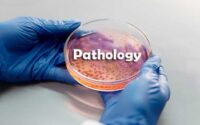Tuberculosis and Respiratory Medicine Questions and Answers
Tuberculosis and Respiratory Medicine Questions and Answers paper for the written examination is given below. Candidates who are looking for Tuberculosis and Respiratory Medicine exam Questions and Answers paper can find in this section. The applied candidates who are getting prepared for the Tuberculosis and Respiratory Medicine can view this page for the Tuberculosis and Respiratory Medicine Last Ten Years Questions and Answers Papers.

Download the Tuberculosis and Respiratory Medicine Questions and Answers & Solutions & make it as a reference for your exam preparation. Take advantage of these Tuberculosis and Respiratory Medicine Questions and Answers Papers in a proper manner to get qualifying Marks. Last 5 years Tuberculosis and Respiratory Medicine Questions and Answers Papers provided here. Candidates who are applied for the above exam can check and download the Tuberculosis and Respiratory Medicine Questions and Answers Papers from here.
Questions and Answers on Tuberculosis and Respiratory Medicine
1. One of the following statements is not true for bronchogenic cysts –
(1) About three quarters of the bronchogenic cysts are intraparenchymal.
(2) Intraparenchymal cysts communicating with bronchus do not have gas exchange potential.
(3) Intrapulmonary bronchogenic cysts are most common in lower lobes.
(4) Mediastinal bronchogenic cysts rarely maintain communication with respiratory tract.
2. Total airway resistance at different levels of respiratory tract is contributed by
(a) nose (b) pharynx and larynx (c) trachea (d) medium sized lobar bronchi.
Arrange these sites in descending order of maximum to minimum contribution to airway resistance –
(1) a,b,c,d
(2) d,c,b,a
(3) c,d,a,b
(4) c,d,b,a
3. One of the following statement is not true for Positron Emission Tomography in pulmonary neoplasia –
(1) False negative findings may result from slowly growing tumor.
(2) False positive findings may result from talc pleurodesis.
(3) It is best suited tool for surveillance after curative intent early stage NSCLC.
(4) Higher uptake of FDG by NSCLC is often associated with poorer prognosis.
4. One of the following statement is not true for Bronchial thermoplasty –
(1) The bronchoscopy session should not be more than one week apart.
(2) The technique is accomplished by delivering controlled heat to the airway walls.
(3) It aims to reduce the airway smooth muscle mass.
(4) The procedure should start with treatment of each lower lobe separately.
5. Following are the statements in relation to benign tracheal stenosis —
(i) Idiopathic laryngotracheal stenosis does not involve cartilage.
(ii) Mucosal ischemia is the cause of post intubation tracheal stenosis.
(iii) Tuberculosis is the commonest cause of post infectious tracheal stenosis worldwide.
(iv) There is an increasing trend of post intubation tracheal stenosis in recent past.
The correct statements are –
(1) (i), (ii) & (ii)
(2) (ii), (iii), & (iv)
(3) (i), (ii) & (iv)
(4) (ii) & (iii)
6. Drug of choice for Methicillin-resistant Staphylococcus Aureus monomicrobial lung abscess is –
(1) Daptomycin
(2) Linezolid
(3) Cefazolin
(4) Vancomycin
7. Drug of choice for Invasive Pulmonary Aspergillosis is –
(1) Posaconazole
(2) Lipid Formulation of Amphotericin B
(3) Variconazole
(4) Caspofungin
8. One of the following statement is not true for Mucormycosis –
(1) Hematologic malignancies are most common underlying condition predisposing to mucormycosis.
(2) Pulmonary infections are commonly associated with hematologic malignancies.
(3) Sinus involvement is more commonly seen in patients with Diabetes.
(4) Breakthrough mucormycosis is most notable with voriconazole therapy.
9. Which set of GOLD-COPD categories are correctly defined out of below four mentioned?
(i) Class A – Low symptoms, low risk
(ii) Class B – Low symptoms, high risk
(iii) Class C – High symptoms, low risk
(iv) Class D – High symptoms, high risk
(1) (i), (ii)
(2) (ii), (iii)
(3) (i), (iv)
(4) (ii), (iv)
10. Which one of the following studies does not involve role of bronchodilators and inhaled corticosteroids in treatment of COPD?
(1) BRONCUS
(2) TORCH
(3) FLAME
(4) INSPIRE
11. Which of the following is not a component of BODE index?
(1) Body Mass Index
(2) Airway obstruction
(3) Dyspnea
(4) Exacerbation frequency
12. Alpha-1- Antitrypsin deficiency is –
(1) classically associated with centrilobular emphysema.
(2) defined as concentration of less than 50 mg/dL in PIZZ individuals.
(3) disease is most prominent in upper zones.
(4) Not responsible for inflammation of all COPD patients.
13. Which one of the following is source of most common indoor allergen?
(1) Cat fur
(2) Dog fur
(3) Cockroaches
(4) House dust mite
14. Which one of the following statement in relation to bronchial asthma is wrong?
(1) In aspirin induced asthma, IgE related mechanism are at work.
(2) Aspirin sensitive severe asthma may be refractory to inhaled and oral corticosteroids.
(3) Occupational asthma is asthma arising de novo as a consequence of exposure to specific etiologic agent.
(4) False negative results of bronchial challenge test may be obtained in asymptomatic individuals with intermittent symptoms.
15. Purse lip and diaphragmatic breathing have least favourable impact on which one of the following components of COPD?
(1) Respiratory Rate
(2) Dynamic compression of airways
(3) Spirometric Parameters
(4) Gas exchange
16. A 65-year-male, smoker was found to have following T,N,M descriptor, (was having biopsy proven squamous cell carcinoma), T = 4 cm size tumor with pericardial invasion, N = definite subcarinal lymph node involvement with no evidence of distant metastasis. According to lung cancer stage classification (eighth edition), this patient fits in which of the following group at best?
(1) II B
(2) III A
(3) III B
(4) III C
17. Which of the following lymph node station of mediastinum is better assessed by EVS as compared to EBUS?
(1) Station 2
(2) Station 4
(3) Station 7
(4) Station 9
18. Which of the following cancer does not appear to have causal link with tobacco smoking?
(1) Kidney
(2) Liver
(3) Endometrium
(4) Pancreas
19. Impact of smoking on serum theophylline levels is best described as –
(1) Smoking does not affect serum theophylline levels.
(2) Smoking results in inadequate serum theophylline levels.
(3) Smoking results in increase in serum theophylline levels.
(4) Impact of smoking on serum theophylline levels in not known.
20. Severe psychiatric symptoms including suicidal ideation is reported with one of the following pharmacologic intervention for smoking cessation –
(1) Bupropion
(2) Clonidine
(3) Varenicline
(4) Nortriptyline
| Practice Set | MCQs |
| Quiz | Questions and Answers |
21. One of the following statement is not correct for Idiopathic Pulmonary Fibrosis histopathology –
(1) Fibroblastic foci are essential to the histopathologic diagnosis of UIP.
(2) Fibroblastic foci are a reflection of active and ongoing fibroplasia.
(3) Fibroblastic foci are covered by hyperplastic alveolar lining cells.
(4) There is significant chronic interstitial inflammation.
22. Which of the following is not a component of GAP model for IPF prognostic staging system?
(1) Sex
(2) Age
(3) DLCO
(4) CT fibrosis score
23. Cigarette smoking does not seem to increase risk of one of the following Interstitial Lung Diseases (ILD) –
(1) Acute Interstitial Pneumonia
(2) Respiratory Bronchiolitis associated ILD
(3) Idiopathic Interstitial Fibrosis
(4) Pulmonary Langerhans cell Histiocytosis
24. Most common, non-malignant, pleural manifestation of asbestos exposure is –
(1) Pleural plaques
(2) Diffuse pleural thickening
(3) Rounded atelectasis
(4) Asbestos related pleural effusion
25. Which of the following autoimmune diseases are linked to silica exposure?
(1) ANCA associated vasculitis
(2) Scleroderma
(3) Rheumatoid arthritis
(4) All of the above
26. ‘Silo-filler’s disease’ is well known for exposure to –
(1) Ammonia
(2) Chlorine
(3) Sulphur dioxide
(4) Nitrogen oxides
27. Amiodarone has been implicated in all of the following drug induced pulmonary disorders, except –
(1) Interstitial infiltrates & fibrosis
(2) Bronchiolitis obliterans – organizing pneumonia
(3) Diffuse alveolar haemorrhage
(4) Eosinophilic lung disease
28. All of the following are classified as Group 1 pulmonary hypertension, except –
(1) Portal Hypertension
(2) Schistosomiasis
(3) Scimitar syndrome
(4) Drug and toxin induced pulmonary hypertension
29. One of the following drugs is classified as ‘definite’ risk factor for increased risk of pulmonary hypertension.
(1) Dasatinib
(2) Interferon- α
(3) Bosutinib
(4) Leflunomide
30. One of the following is first and currently only USFDA approved therapy for inoperable chronic thromboembolic pulmonary hypertension –
(1) Subcutaneous Treprostinil
(2) Riociguat
(3) Macitentan
(4) Epoprostenol
31. Out of the following precipitants of ARDS, which one has a better prognosis as compared to others?
(1) Sepsis
(2) Chronic liver disease
(3) Non-pulmonary organ dysfunction
(4) Major trauma
32. A 20-year-young male, HLA-B5-1 positive, presents with uveitis, pulmonary artery aneurysm and erythema nodosum. He developed a pustule 2 days after an accidental skin prick. Most probable diagnosis is –
(1) Systemic Lupus Erythematosus
(2) Behcet syndrome
(3) Sarcoidosis
(4) Mixed connective tissue disease
33. Hepatoxic anti-TB drugs are needed to be stopped in each of the following situations, except –
(1) AST/ALT elevation (5xUNL) with normal bilirubin
(2) AST/ALT elevation (3XUNL) with elevated bilirubin (2xUNL)
(3) AST/ALT elevation (4xUNL) with normal bilirubin, asymptomatic
(4) AST/ALT elevation (2xXUNL) with normal bilirubin, symptomatic
34. Dominant clinical feature of cryptic miliary tuberculosis is –
(1) Fever
(2) Weight Loss
(3) Lymphedema pathy
(4) Meningitis
35. Which of the following statements are true in relation to Non-tuberculous Mycobacterial Infections (NIM)?
(i) A single positive culture for NTM is usually regarded as indeterminate for the diagnosis.
(ii) One single positive bronchial wash culture regardless of results of AFB smear is considered a diagnostic criteria.
(iii) Mycobacterium Scrofulaceum Lymphadenitis is commonest in children.
(iv) Skin and soft tissue infections are usually due to Rapidly Growing Mycobacteria.
(1) (i), (ii), (iv)
(2) (i), (iii), (iv)
(3) (ii), (iii), (iv)
(4) (i), (ii), (iii)
36. One of the following statement are not true for treatment of Mycobacterium Avium Complex (MAC) pulmonary disease
(1) Treatment outcomes are better when macrolide based regimens are used.
(2) Lack of culture conversion at 6 months is considered treatment failure.
(3) Single addition of Amikacin liposome inhalation suspension is indicated for treatment refractory MAC.
(4) Microbiologic recurrence is twice as common among patients with cavitary disease compared with nodular bronchiectasis.
37. One of the following statement are not true for CNS Tuberculosis –
(1) The risk of neurological TB is five times more in HIV infected individuals.
(2) Hydrocephalous in acute stages is due to adhesive leptomeningitis.
(3) Sixth nerve involvement is most common among cranial nerve palsies.
(4) Complete or partial loss of vision is a major complication of disease.
38. Out of four statements for uses of Delamanid (Dlm), choose the correct ones –
(i) Dlmis considered only for longer M/XDR-TB regimen.
(ii) Dlm should be taken preferably after a standard meal.
(iii) Dlm dose adjustments are required when used with Lopinavir/Ritonavir.
(iv) In the presence of FQ resistance, Dlm should be used as first replacement drug.
The correct statements are –
(1) (i), (ii), (iii) & (iv)
(2) (i), (iii), (iv)
(3) (i), (ii), (iii)
(4) (i), (ii), (iv)
39. Preferred replacement sequence of group c drugs for longer oral M/XDR-TB regimen is –
(1) Delamanid, Amikacin, Pyrazinamide, Ethionamide
(2) Delamanid, Ethionamide, Pyrazinamide, Amikacin
(3) Pyrazinamide, Delamanid, Ethionamide, Amikacin
(4) Pyrazinamide, Delamanid, Amikacin, Ethionamide
40. Which one of the following is not a contraindication for TB preventive treatment?
(1) Chronic Hepatitis
(2) Concurrent use of Nevirapine
(3) Sign and symptoms of peripheral neuropathy
(4) Previous history of TB
41. One of the following is not a common lesion of anterior compartment of mediastinum –
(1) Thymomas
(2) Lymphomas
(3) Germ cell turmors
(4) Foregut cysts
42. All of the following are true for benign mediastinal teratomas, except –
(1) Itis almost exclusively a disease of men.
(2) Trichophytosis is pathognomonic.
(3) CT with contrast is diagnostic procedure of choice.
(4) Tumor markers (β -HCG and AFP) are not elevated.
43. Castleman’s disease is characterised by all of the following features, except –
(1) Unicentric disease is most commonly located is mediastinum.
(2) Multicentric disease has hepatosplenomegaly as an intra-abdominal component.
(3) Centricity is less important than histology in predicting long term outcome.
(4) Herpes virus 8 has been implicated in pathogenesis.
44. On Pleural ultrasound, which of the following sign is most sensitive and specific feature that differentiates a small effusion from pleural thickening?
(1) Fluid color sign
(2) Seashore sign
(3) Barcode sign
(4) Dynamic air bronchogram
45. All of the following are well described cytological features suggesting mesothelial differentiation, except –
(1) hyaluronic acid vacuoles
(2) peripheral glycogen lakes
(3) genuine mucin
(4) intercellular windows



